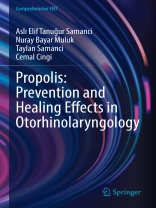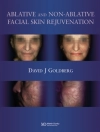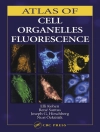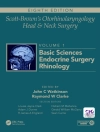This book offers comprehensive and up-to-date information about propolis and its applications in otorhinolaryngology. Propolis, a natural resin produced by bees, has been shown to possess antioxidant and antimicrobial properties. Despite numerous publications discussing its benefits, the authors’ goal is to compile scientifically proven data into an academic resource that can aid in further research in the field of propolis and its applications. With a focus on evidence-based information, this volume presents only preclinical and clinical studies, prioritizing proven effects over potential therapeutic benefits.
The initial chapters are dedicated to general information on bees, hives, honey, and propolis. The following chapters delve into the antiseptic, antibacterial, antiviral, and antimycotic effects of propolis, followed by more specific discussions on topics such as sinus and pulmonary effects. Other chapters explore the effects of propolis on conditions like rhinosinusitis, nasal blockage, and allergic rhinitis. The final chapter focuses on Anatolian Propolis and its distinct characteristics.
Given the rising popularity of propolis, this updated reference should be an essential addition to the libraries of otolaryngologists, head and neck surgeons, general practitioners, and all individuals seeking information to understand the benefits of propolis and its relevance in modern healthcare practices.
Cuprins
1 Bee: Overview.- 2 Anatomy and Life cycle.- 3 Hives.- 4 Bee Families.- 5 Honey: overview.- 6 Propolis: overview.- 7 Propolis as an antiseptic.- 8 Propolis as an antibacterial.- 9 Propolis as an antiviral.- 10 Propolis as an antimycotic.- 11 Diseases of the honeybees.- 12 Propolis and benefits.- 13 Bee Products in Facial Plastic Procedures and Otolaryngology.- 14 Nasal effects of propolis.- 15 Pulmonary effects of propolis.- 16 Effect of Propolis on Rhinosinusitis.-17 Effect of Propolis on Nasal blockage.- 18 Effect of Propolis on allergic rhinitis.- 19 Effect of Propolis on asthma.- 20 Why use propolis in toothpaste.- 21 Why use propolis in skincare.- 22 Anatolian Propolis: What are the different features?.
Despre autor
Asli Elif Tanugur Samanci, Ph D, graduated from the Department of Food Engineering at Istanbul Technical University in 1996. She received a Master of Science degree from the same university in 2006. Her thesis involved research on the determination of the origin of honey. She completed her doctorate at Duzce University’s Department of Biology. Her research interest focused on bee product characterization, particularly on analytical methodology. Under this area, she directed many R&D projects supported by The Scientific and Technological Research Council of Turkey, the Undersecretariat of the Prime Ministry for Foreign Trade, and other national and international organizations. Her projects were also awarded by The Scientific and Technological Research Council of Turkey, the Istanbul Chamber of Commerce, and Eurowards Turkey. She has expertise in Food Safety and Quality Assurance Management Systems and Laboratory Management Systems such as ISO 9001, ISO 22000 BRC, and ISO-17025. She has many scientific publications and presentations worldwide about the properties and analysis of bee products at international congresses and symposia. She is also the author of the sector guideline “Good Hygienic Practices for Honey Packers, ” which was prepared under a project managed by the Ministry of Agriculture and Forestry Affairs of the Turkish Republic. As the project coordinator, she is also the founder of the Istanbul Technical University Bee Products Excellence Center.
Nuray Bayar Muluk, MD, has been a Professor at the Department of Otorhinolaryngology at Kirikkale University Faculty of Medicine in Kırıkkale, Turkey, since 2008. She graduated from Hacettepe University Faculty of Medicine in 1990 and completed her ENT residency at the same University in 1994. Her interests include basic research, cancer, neuroscience, rhinology, and allergy. She has an extensive publication record, with 307 international and 74 national papers. Additionally, she is an author or co-editor of 7 international books, 6 national books, and 2 translated books. Furthermore, she serves as one of the guest editors of supplements in 3 SCI-Expanded Journals. Dr. Bayar Muluk has contributed significantly to various book chapters, authoring 77 international chapters, 49 national book chapters, and 11 translated book chapters. In recognition of her expertise and accomplishments, she holds several key positions at Kırıkkale University. Dr. Bayar Muluk is appointed as Advisor to the Rector, where she is responsible for Research and Development. Moreover, she is a Vice President and Board Member of Kırıkkale University’s Cancer Research and Application Center. Additionally, she serves as the Director of Quality Management at Kirikkale University Medical Faculty Hospital. Dr. Nuray Bayar Muluk’s outstanding contributions have garnered recognition in international and national medical and academic communities.
Taylan Samanci, Ph D, graduated from the Department of Agriculture at Trakya University in 1996. He received a Master of Science degree from the Duzce University Department of Biology in 2006. His thesis involved research on Anatolian bee venom in terms of chemical composition. His research interest focused on bee product characterization, particularly on analytical methodology. Under this area, he directed many R&D projects supported by The Scientific and Technological Research Council of Turkey, the Undersecretariat of the Prime Ministry for Foreign Trade, and other national and international organizations. He has many scientific publications and presentations worldwide about the properties and analysis of bee products at international congresses and symposia.
Cemal Cingi, MD, is a Professor in the Otorhinolaryngology Department at Eskisehir Osmangazi University, Medical Faculty, Eskisehir, Turkey. He graduated from the School of Medicine at Istanbul University in 1984 and then entered the Otorhinolaryngology Residency Programme at Anadolu University, Eskisehir, becoming a Specialist in ORL & HNS in 1990. He was appointed Associate Professor in 1995 and a professor in 2001. In 2013, he became an accredited Mouth, Face, and Chin Surgery specialist. Dr. Cingi was Chair of the ENT Section of the European Academy of Allergy and Clinical Immunology (EAACI) and President of the Asian Facial Plastic Surgery Society (AFPSS). He has more than 300 published papers and 30 books. He is on the editorial board of several journals.












